Monitoring our reefs (Pt 2)
 February 8, 2017
February 8, 2017

Over several weekends (and some weekday nights!) we had Dr Jeffrey Low introduce us to the art (and science) of reef surveys! Through his enthusiastic sharing, we learnt some of the survey methods commonly used to monitor coral reefs. He also taught us the importance of citizen science and its vital contribution to conservation work. We also learned to identify some common lifeforms found on our local reefs, and how to record our findings in a way that is useful for scientists and agencies to use. Above: Hantu Blog volunteers with Dr Jeffrey Low. Photo by Debby.
I was looking forward to this long-awaited dive so that I can finally put what we have been learning to the test! We were lucky to have regular local diver and veteran reef survey volunteer, Chay Hoon (aka the marine encyclopaedia), to help with our training.
We practiced the Line Intersect Transect survey method, where buddy pairs lay a long measuring tape at a certain depths along the reef crest and reef slope. The types of organisms lying under the tape is noted, along with their respective distance along the tape. It was a fun challenge to maintain our motionless position in the water, all the while trying to figure out what we were looking at and writing it down.

Wei Jie, a volunteer, practices laying a line transect. Photo by Chay Hoon.
We practiced the general identification of different types of reef organisms, which is much easier said than done. Corals, in particular, are sometimes exceedingly challenging to identify correctly. Thankfully, we were blessed with an amazing 5m of visibility, and almost no surge or current!
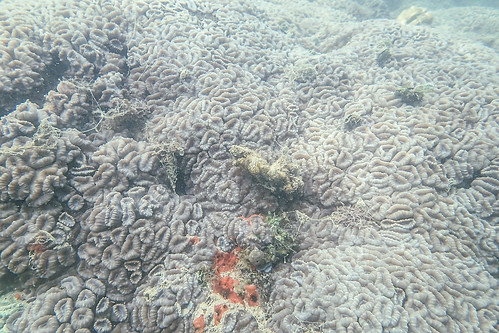
Hard coral: CAU. Photo by Chay Hoon.

Hard coral: GAL. Photo by Chay Hoon.
We were really stoked to find some interesting critters, which kindly graced us with their presence! The waters are a couple degrees cooler than usual this time of the year, perhaps contributing to seasonal biodiversity.
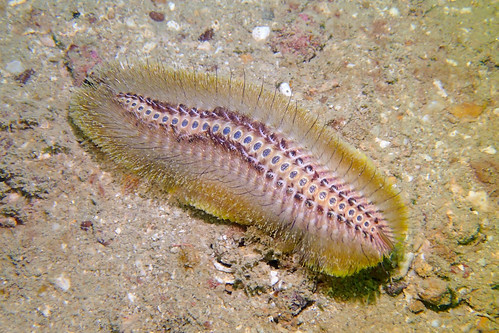
Fireworm. Do not touch these! Photo by Gina.
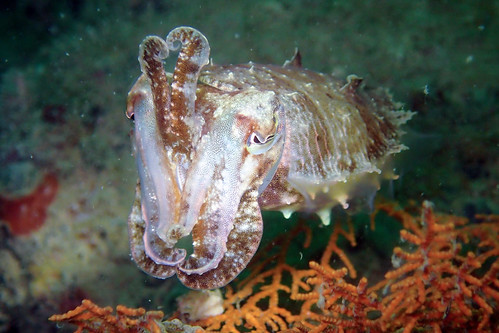
A cuttlefish makes a heart sign. Photo by Gina.
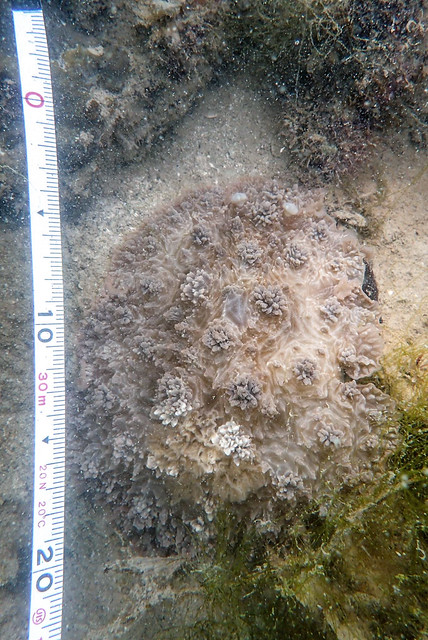
Dendrodoris tuberculosa, a huge nudibranch, checking on our survey methodology. Photo by Gina.
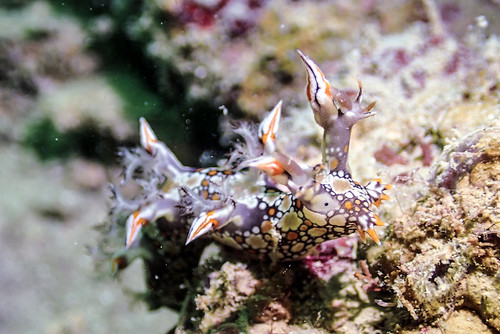
Bornella nudibranch. Photo by Gina.
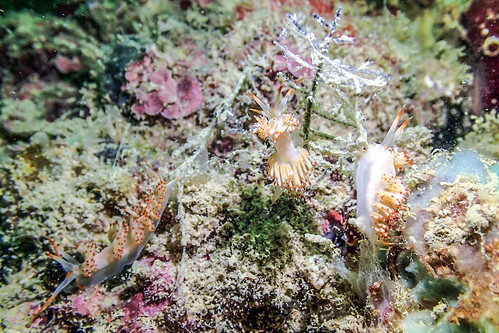
Nudibranch party, Sakuraeolis nungunoides. Photo by Gina.
A thick layer of green algae, which made some areas look like a meadow, covered the shallow reefscape. A lovely school of razorfish entertained us for much of the morning, zipping around while we worked.

Razorfish school. Photo by Chay Hoon.
I had a great day out on the reef with like-minded volunteers who love our backyard dive site Hantu. We didn’t want to come up to the surface because there’s always so much more to learn and protect!
Read more about our Reef Check training process!
Nicholas Chew joined the Hantu Blog as a volunteer in 2016 after graduating from James Cook University where he studied marine biology. He is a PADI rescue diver and photographer with a great passion for the marine environment. He became a volunteer because he “loved to contribute to local conservation efforts regularly”. Join Nicholas and the rest of our team at Pulau Hantu!
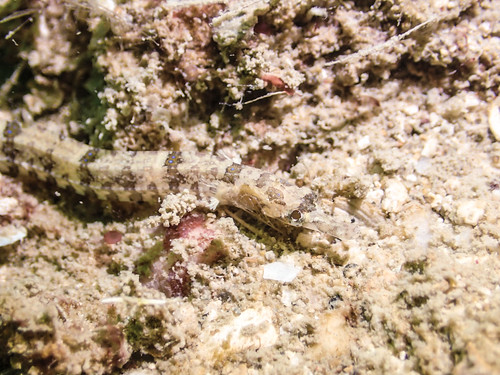
 Posted in
Posted in 



 content rss
content rss
COMMENTS